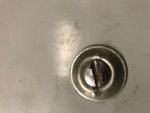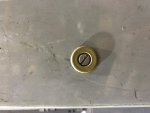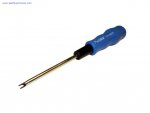rhamblin
Senior Member
- Location
- Kaukauna, Wisconsin
We have a few I-line panels at our facility, and in addition the covers being large and heavy, they seem to have these weird rotary clamps.



The rotary clamp part only has two little notches and sometimes none. The only way I can figure to get them to rotate is to use a flat tip blade screwdriver. But the manufacturer must've had something in mind when they made these. Does anyone have any idea what that is?



The rotary clamp part only has two little notches and sometimes none. The only way I can figure to get them to rotate is to use a flat tip blade screwdriver. But the manufacturer must've had something in mind when they made these. Does anyone have any idea what that is?


